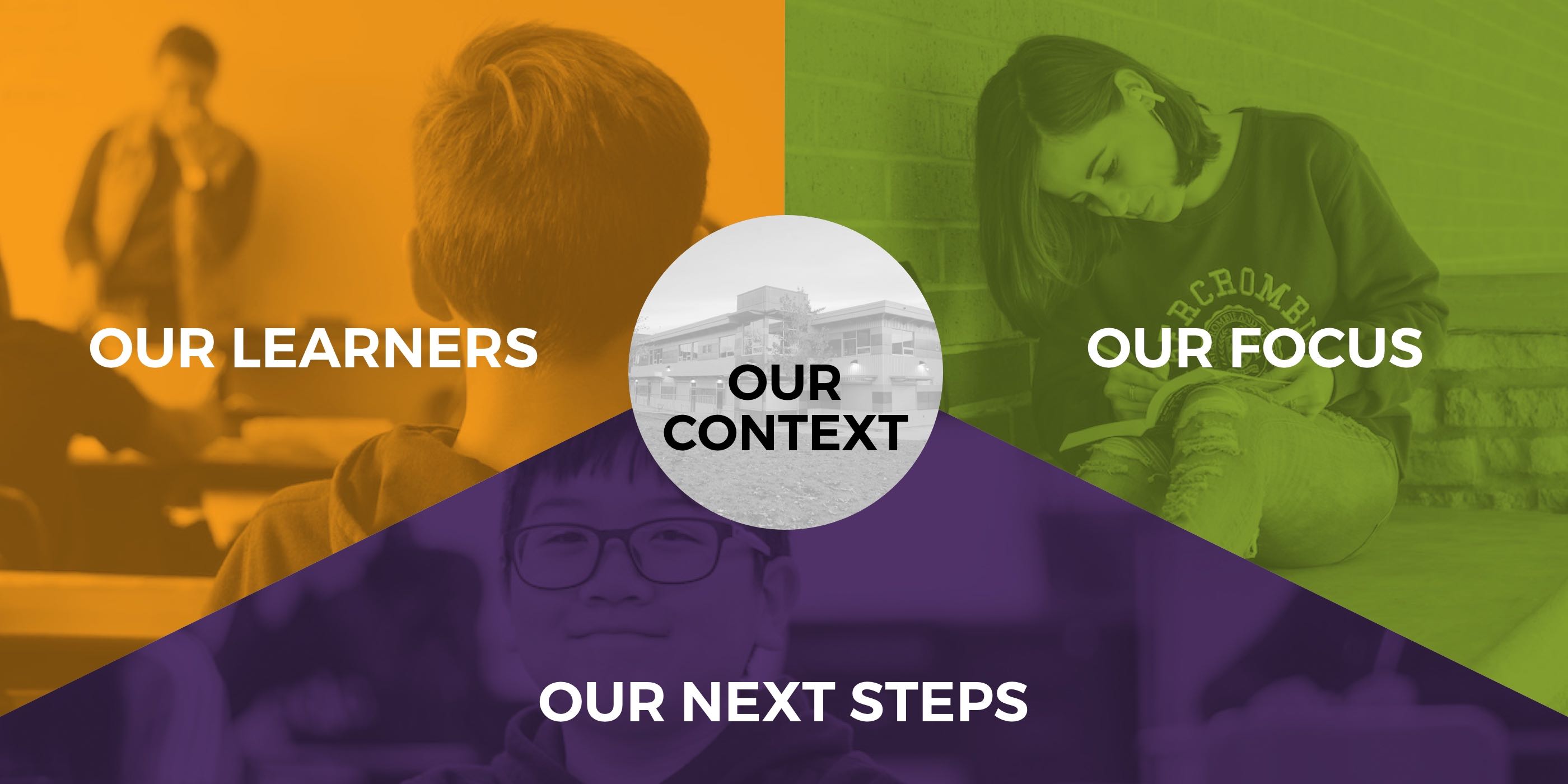Kirkbride Elementary 24-25


OUR CONTEXT
OUR LEARNERS
At Kirkbride, we believe that strong literacy skills form the foundation for lifelong learning and meaningful participation in society. Literacy empowers students to interpret the world around them, think critically and creatively, and realize their full potential. From Kindergarten through Grade 7, literacy is integrated across all areas of learning.
Literacy encompasses the ability to understand, analyze, and create a range of communication forms—oral, written, visual, digital, and multimedia—to achieve personal and academic goals. While often associated with language arts, literacy plays a vital role in every subject area, supporting students in all aspects of their learning.
At Kirkbride, learners come from diverse cultural backgrounds and are proud of their identities. They share stories from their cultures and ancestors, enriching the classroom community and deepening everyone’s understanding of the world. Through these shared experiences, students not only develop literacy skills but also build empathy, connection, and a sense of belonging.
Across all grade levels, students engage with stories and a variety of texts to develop, demonstrate, and apply comprehension strategies and critical thinking skills, supporting their growth as confident and capable communicators.
Our learners and their families understand that language and text can be a source of creativity and joy.
In the images below you see students in various grades enjoying reading. At Kirkbride we have monthly Family Read mornings. On Family Read days, parents, grandparents and caregivers are invited into their child's classroom to read with their child. For students whose families are unavailable, siblings partner to read and/or older students buddy up with younger students to read together.

Our learners can comprehend and connect (reading, listening, viewing) with texts to understand themselves and make connections to others and the world.
Students use a variety of comprehension strategies before, during, and after reading, listening, or viewing to deepen their understanding of text. These strategies include activating prior knowledge, making predictions, setting a purpose, making connections, asking questions, previewing written text, making inferences, drawing conclusions, and using context clues.
The image below shows a Grade Two student sharing their prediction while they were in the process of reading the book Chester's Way.

Our learners use personal experience and knowledge to connect to text and deepen understanding of self, community, and world.
In the image below you will see many strategies a student in Grade 5 sharing their connections to the text they read.

Students apply a variety of thinking skills including self-monitoring, reflecting, goal setting to gain meaning from texts.
OUR FOCUS
Kirkbride Elementary, located in the City Centre zone of the Surrey School District, served a student population of approximately 400. Within this diverse community, two primary teachers worked collaboratively to support a combined class of 34 Grade 2 and 3 students, 79% of whom were designated as English Language Learners (ELLs).
Data: The table and chart below summarize the stages of English language development across the domains of oral language, reading, and writing.

In order to learn more about their students’ reading skills, the team started to explore further by using the Dynamic Indicators of Dynamic Indicators of Basic Early Literacy Skills (DIBELS) assessment. In October 2024, both teachers administered the DIBELS Maze comprehension assessment (see data and chart below).

The instructional focus was on identifying effective universal Tier 1 classroom strategies that would support all students—especially English Language learners in developing reading comprehension skills. The plan centred on the implementation of Reciprocal Teaching and Explicit Instruction to strengthen both oral language and comprehension.
A team-teaching approach was used, with a Learning Support HelpingTeacher (LST) collaborating weekly with classroom teachers. The school administrator also worked with students during some sessions, allowing the instructional team time for assessment and planning.

Students were active participants throughout the process. During Reciprocal Teaching, they took on leadership roles in small-group discussions, guiding their peers through reading passages using four targeted strategies: predicting, questioning, clarifying, and summarizing. This approach helped students engage deeply with texts while developing metacognitive awareness and communication skills. Students learned to ask thoughtful questions, clarify meaning using context clues, summarize main ideas, and make predictions based on text evidence.

As Explicit Instruction was introduced, students observed clear teacher modeling of reading strategies and then engaged in guided practice. Over time, they took on more responsibility for applying strategies independently. Students used tools such as graphic organizers, sentence frames, and structured prompts to support their thinking and to communicate their ideas more effectively.
To extend their learning, students also participated in differentiated writing activities that were directly connected to the texts they were reading. These writing tasks encouraged students to apply comprehension strategies in writing, helping them to organize their thoughts, make inferences, and support their responses with evidence from the text.
OUR NEXT STEPS
The Maze Comprehension assessment results showed growth for students who were struggling with reading and for students who were skilled readers. These results support using reciprocal teaching strategies, explicit instruction and scaffolded activities to support growth for students who are struggling with reading and for students at higher skill levels.
These strategies allowed all students to participate in learning activities and to learn from one another in small group and pair work. Scaffolded assignments for individual work allowed students to begin independent work with teacher support for students most at risk.

Next Steps
The strategies used in our inquiry can be extended to support comprehension of non-fiction reading material in the content areas. For example, both discussions and writing can be supported using sentence frames and stems that align with graphic organizers used for comparing, pro con, sequencing and cause and effect. Teachers can explore using Artificial Intelligence to create materials using prompts that include the strategies we explored.
